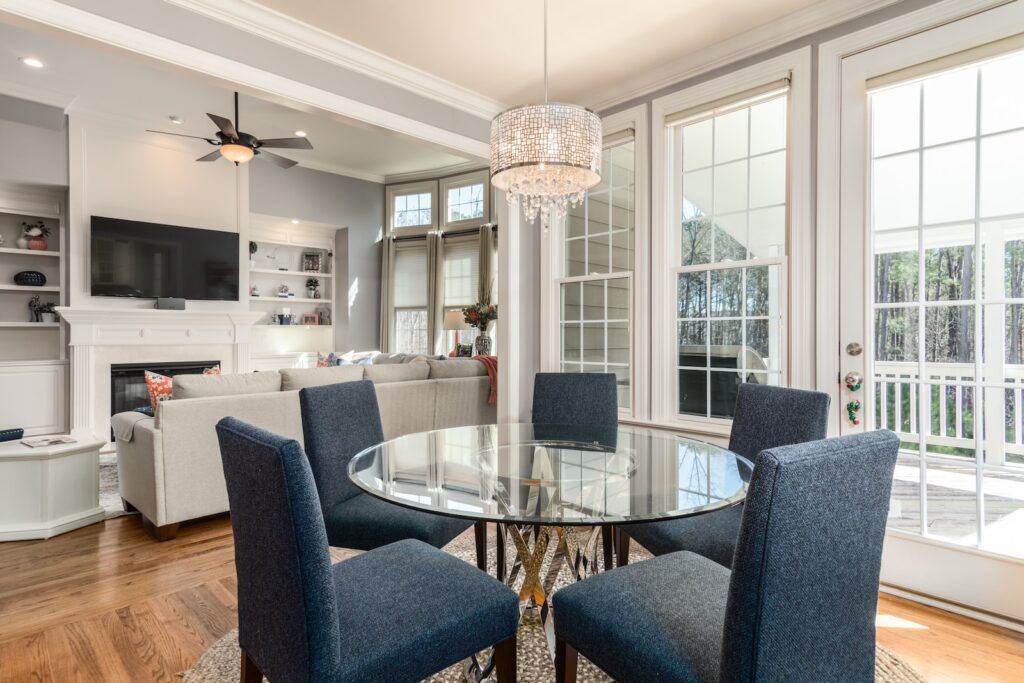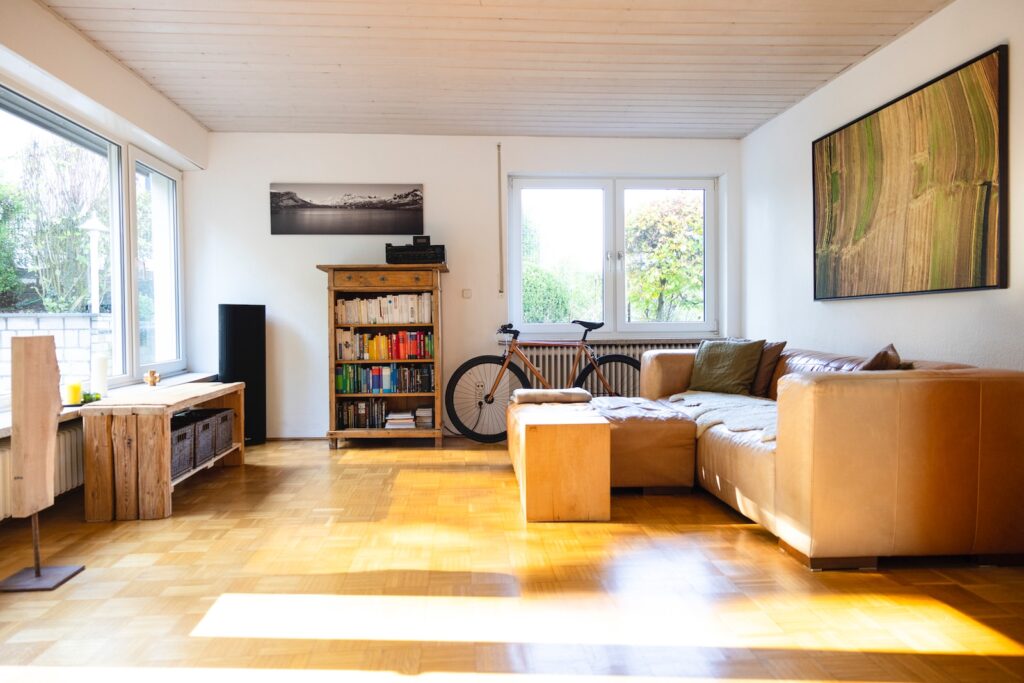Windows are an essential part of any home’s design. They not only provide natural light and ventilation but also add to the aesthetic appeal of the property. However, choosing the right window frames can be a daunting task, given the numerous materials, styles, and techniques available. In this complete guide to window framing, we’ll explore everything you need to know to make an informed decision that suits your needs and budget. From traditional wooden frames to modern vinyl and aluminum options, we’ve got you covered. So, let’s dive in!

Materials
When it comes to window framing, there are several materials to choose from, each with its own advantages and disadvantages.
Wood
Wood is a popular choice for window frames because of its natural beauty and excellent insulation properties. It is also a renewable resource, making it an eco-friendly option. However, wood requires regular maintenance to prevent rot, warping, and insect damage. It is also more expensive than other materials.
Vinyl
Vinyl is a low-maintenance and cost-effective material that is resistant to moisture, corrosion, and fading. It is also energy-efficient and can help reduce your heating and cooling costs. However, vinyl frames can be limited in terms of color and design options, and they may not be as durable as other materials.
Aluminum
Aluminum frames are strong, lightweight, and durable, making them ideal for large windows and doors. They are also low-maintenance and resistant to rust and corrosion. However, aluminum is not as energy-efficient as other materials, and it can conduct heat and cold, leading to condensation and heat loss.
Fiberglass
Fiberglass frames are a relatively new option that offers excellent insulation, strength, and durability. They are also low-maintenance and resistant to moisture, insects, and UV rays. However, fiberglass frames can be more expensive than other materials, and they may not be readily available in all areas.
Styles
Window frames come in a variety of styles, each with its own unique features and benefits.
Casement Windows
Casement windows are hinged on one side and open outward, providing excellent ventilation and an unobstructed view. They are also energy-efficient, as they create a tight seal when closed. However, casement windows can be more expensive than other styles, and they may not be suitable for all types of homes.
Double-Hung Windows
Double-hung windows have two sashes that slide up and down, allowing for easy cleaning and ventilation control. They are also versatile and can be customized to fit any architectural style. However, double-hung windows can be less energy-efficient than other styles, as they tend to have more air leakage.
Sliding Windows
Sliding windows have one or more sashes that slide horizontally, providing a modern and sleek look. They are also easy to operate and maintain, making them a popular choice for modern homes. However, sliding windows may not provide as much ventilation as other styles, and they may be more prone to air leakage.
Techniques
There are several techniques used in window framing to improve energy efficiency, durability, and security.
Insulated Glass
Insulated glass consists of two or more panes of glass separated by a spacer, which is filled with a gas such as argon or krypton. This creates a barrier that reduces heat transfer and noise, making your home more comfortable and energy-efficient.
Low-E Coatings
Low-E coatings are thin, metallic layers applied to the glass surface to reflect heat and UV rays. This helps to keep your home cool in the summer and warm in the winter, reducing your heating and cooling costs.
Multi-Point Locking System
A multi-point locking system is a mechanism that secures the window at multiple points along the frame, making it more difficult to break in. This provides added security and peace of mind.
Tilt-In Sashes
Tilt-in sashes allow you to clean your windows from the inside, eliminating the need for ladders or professional cleaners. This makes maintenance easier and more convenient.
Wrapping It Up
In conclusion, choosing the right window framing materials, styles, and techniques can have a significant impact on the comfort, energy efficiency, and security of your home. By considering the factors discussed in this guide, you can make an informed decision that meets your needs and fits your budget.

Frequently Asked Questions
What are the common materials used for window framing?
There are several materials used for window framing, including wood, vinyl, aluminum, and fiberglass. Wood is a traditional and classic option, but requires maintenance to prevent rot and decay. Vinyl is a popular and low-maintenance option, but may not be as durable as other materials. Aluminum is strong and lightweight, but may not be as energy-efficient. Fiberglass is a newer and more expensive option, but is highly durable and energy-efficient.
When choosing a material for your window framing, consider factors such as durability, energy efficiency, maintenance requirements, and cost.
What are the different styles of window frames?
There are several styles of window frames, including single-hung, double-hung, casement, sliding, and awning. Single-hung and double-hung windows are common in traditional homes and have one or two movable sashes, respectively. Casement windows swing open like a door and are popular in modern homes. Sliding windows have a movable sash that slides horizontally, while awning windows have a hinged sash that swings outward from the bottom.
When choosing a style for your window frames, consider factors such as the architectural style of your home, ventilation needs, and ease of operation.
What are the techniques for installing window frames?
There are several techniques for installing window frames, including full-frame replacement, insert replacement, and retrofit. Full-frame replacement involves removing the entire window, frame and all, and installing a new frame and window. Insert replacement involves replacing only the window itself, while leaving the existing frame in place. Retrofit involves adding a new frame over the existing one, which is typically the most cost-effective option.
When deciding on an installation technique for your window frames, consider factors such as the condition of your existing frame, your budget, and the desired outcome.
How can I maintain my window frames?
Maintaining your window frames is important to ensure their longevity and performance. Regular cleaning and inspection can help prevent issues such as rot, decay, and air leaks. Use a non-abrasive cleaner and a soft cloth or sponge to clean your frames, and avoid using harsh chemicals or abrasive materials. Inspect your frames regularly for signs of damage or wear, such as cracks, gaps, or discoloration, and address any issues promptly.
Other maintenance tasks may include lubricating moving parts, such as hinges and locks, and re-caulking around the frame to prevent air leaks. Consult your manufacturer’s instructions or a professional for specific maintenance recommendations.
What are some energy-efficient options for window framing?
Energy-efficient window framing options can help reduce your heating and cooling costs and improve the comfort of your home. Look for materials with a high insulating value, such as fiberglass or wood-clad windows with foam insulation. Low-E (low-emissivity) coatings can also help reduce heat transfer and UV damage, while argon or krypton gas fills between panes can improve insulation. Consider choosing a framing material and style that fits your climate and energy needs, such as double-paned windows for colder climates or tinted windows for warmer climates.
Consult with a professional or do research on your own to find the most energy-efficient options for your window framing needs.
A Builder’s Guide to Window Selection
In conclusion, window framing is an essential element of any building. It not only provides structural support but also enhances the aesthetic appeal of the structure. The choice of material, style, and technique will depend on various factors such as the building’s location, architectural design, and personal preference.
By understanding the different types of materials available for window framing, such as wood, vinyl, and aluminum, you can make an informed decision on the best option to use. Additionally, exploring various styles, such as double-hung, casement, and picture windows, will enable you to select the ideal type for your building.
Finally, mastering the techniques of window framing installation will ensure that your windows are secure, energy-efficient, and aesthetically pleasing. With this complete guide to window framing, you can now confidently embark on your window framing project, knowing that you have all the necessary information to make informed decisions.


